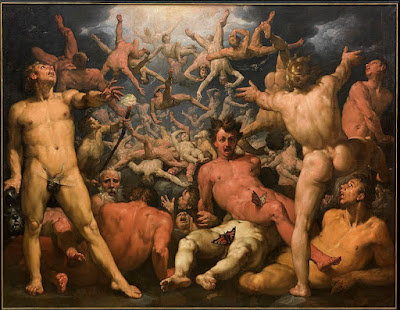13th Century Cham sculpture of Garuda
as he devours a serpent
Garuda
From the readings of the Ramayan this week, I discovered what a Garuda was: the Vahana, or vehicle, of Lord Vishnu whose reach goes all throughout SE Asia, being depicted in nearly every country, often times even in the flags and governmental agencies (including the special forces of the Indian Air Force.) He is likened to a kit bird or an eagle, and is well-known for his serpent eating abilities. People often wear talisman of him in order to guard themselves against a snakebite. Browsing through the different depictions of him throughout different countries and ages, I was drawn to the Cham sculptures of him.
Art of Champa
When I followed the trail to the Cham wikipedia page, it led me straight to the Art of Champa page. This was beginning to all sound a bit more familiar, and as I read, it confirmed that Champa was a SE Asian empire that flourished around Vietnam, including them being linked with the Khmer, people of Java and the Die Viet. I enjoyed the art on this page, but a lot of it depicts Indian mythological subject matter, namely the motif of the makara sea-monster.
Goddess Ganga aboard her Vahana, Makara
Makara
This was the most fun as the first image I saw was Goddess Ganga aboard a Makara. Goddess Ganga is who sparked some creativity in me earlier in the week, I spent some time researching her further and took notes on her hoping to write about her later. So this is rounding out my ideas for that storytelling idea later, perfect! The images on this page were also incredible, including a lot of Makaras in architecture, as it is good luck to keep them around doorways and entrances and be rain spouts or gargoyles and water fountains. However, explaining how Makaras might have been based in fact led me to the next series of trails.
Cryptozoologist and Trunko
Cryptozoologists (excuse, me what? Oh, the people who identify and describe beings from folklore.) associate Makaras with Trunko, a beached sea-creature that turned into a whole event with its own single-word moniker in South Africa in 1924. Reports vary, but apparently Trunko possessed snowy white fur, an elephant trunk, a lobster-like tail, and a carcass without any blood. Further investigation by scientist led them to believe it was a Globster.
The St. Augustine Monster, St. Augustine Florida, 1896.
Globster
A Globster is an unidentified organic mass that washes up on the shore of an oceanic coastline. They lack bones an other unrecognizable structures, which creates confusion in its identity. This has historically led to "monsters" being found in various locations around the globe and reported on with sensational headlines. Giant and colossal squid that have decomposed frequently explain most globsters, however a significant number of them have also had tissue analyzed to determine that they were in fact decomposing sperm whales. Globsters, cryptozoologists believe, were perhaps the origins of several mythological sea creatures.
This led me to search for a video I recall watching once, of a pour soul puncturing the belly of a rotting, decomposing sperm whale whose belly had puffed up to an enormous height, towering far above the man, due to the pressure build up of rotting organs. The man carved with a long sharp edge extended on a handle, clothed in a full outfit of foul weather gear slowly, slowly, slowly carving..... Until it exploded, guts, organs, intestine blowing out sideways and covering the man in a disgusting and wretched manner. It was a great video.































